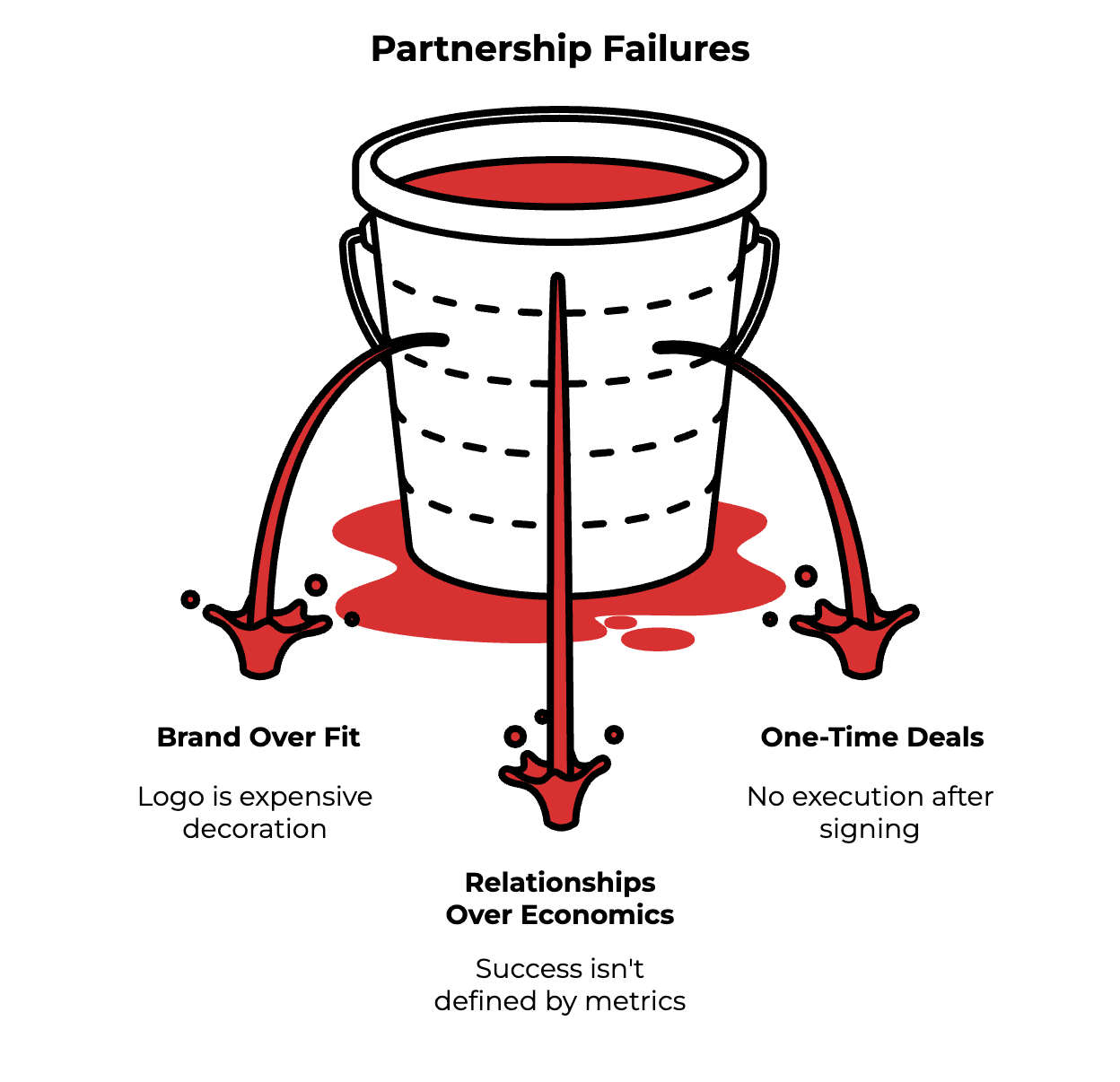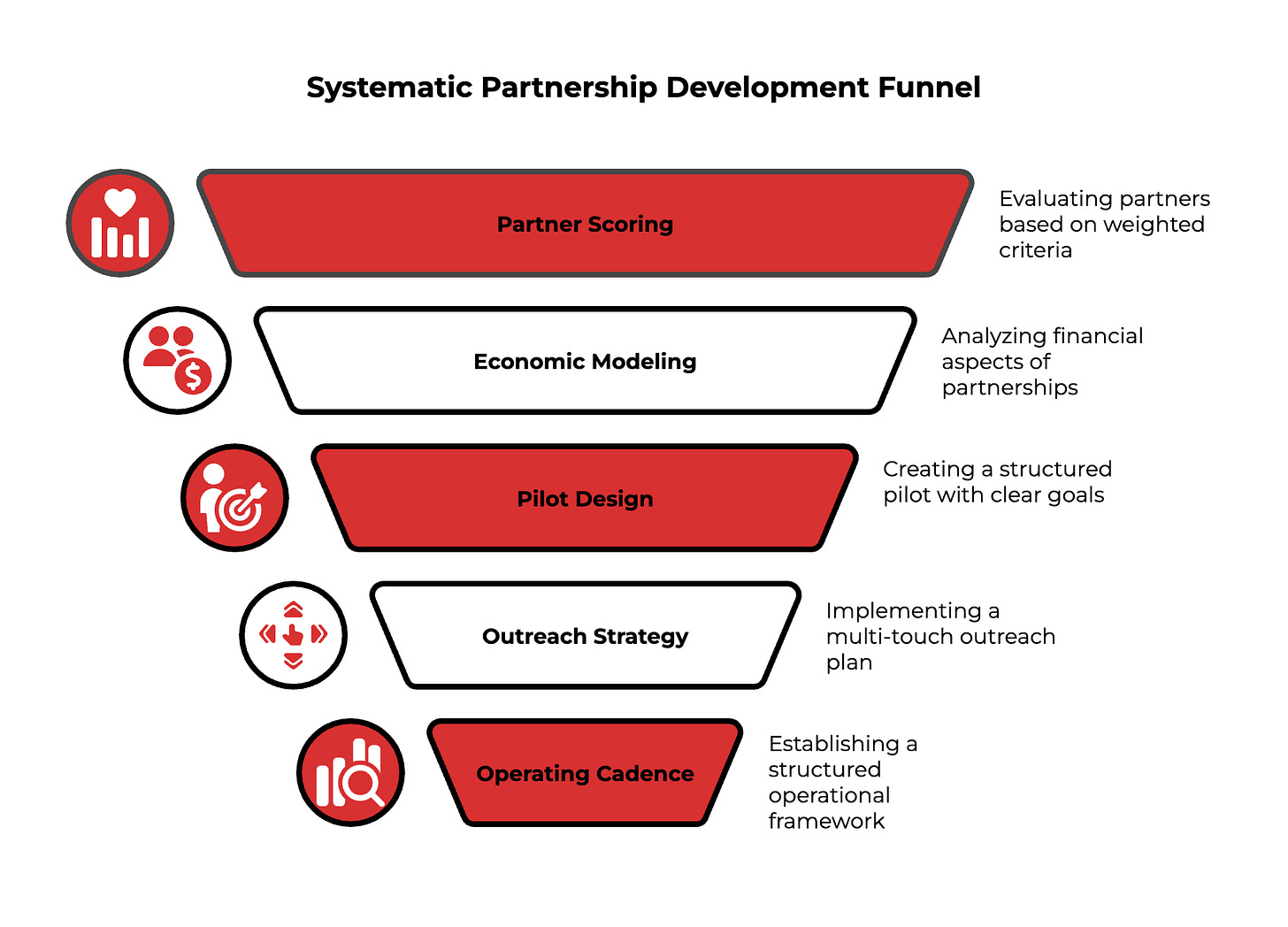One AI Prompt Finds Business Partners Who Actually Pay You
Stop networking and start building relationships that bring revenue
Hey Adopter,
Your partnership strategy is broken if it starts with a list of dream companies and ends with a press release nobody reads.
I just watched a consulting firm spend three months courting a "strategic partner" that generated exactly zero pipeline. They had alignment meetings. They had vision sessions. They had a launch event with branded cupcakes. What they didn't have was a single shared KPI or revenue model.
This happens because we treat partnerships like dating when we should treat them like business development with shared economics.
The three partnership myths killing your growth
Most partnership playbooks fail because they optimize for the wrong signals. You scan industry reports for "top partners," send thoughtful emails about "synergies," and celebrate when someone important agrees to a call.
Partnership failure follows a predictable pattern.
First, you focus on brand names over distribution fit. That Fortune 500 logo looks great on your website, but if their customers aren't your ICP, you just bought expensive decoration.
Second, you negotiate relationships instead of economics. Everyone agrees to "explore opportunities" without defining what success looks like in dollars, deals, or data. Six months later, you are still exploring.
Third, you treat partnerships as one-time deals rather than operating systems. Even when you nail the economics, partnerships die in the gap between signing and execution. No weekly cadence. No shared dashboards. No issue escalation path.
Build a partner engine that sells with you
Real partnerships work when three flywheels align.
Distribution that you can measure, not estimate. If a partner claims they can reach your ICP, make them prove it with audience data, engagement metrics, or pilot results. Distribution without qualification is just spam with a referral code.
Complementarity that fixes an actual gap. You need partners who add what you lack, whether that is product capability, market trust, or data access. The best partnerships make 1+1 = 3 through genuine complementarity, not overlapping offerings that create channel conflict.
Operating rhythm that survives the honeymoon phase. Weekly stand-ups. Monthly business reviews. Shared dashboards. Issue logs. Without these, your partnership becomes that gym membership you forgot to cancel.
A systematic approach to partner development
I've rebuilt the standard partnership playbook into something that actually drives revenue. This approach does five jobs in one systematic process.
First, it defines and scores potential partners using weighted criteria. Strategic fit gets 25% weight. Distribution potential gets another 25%. Complementarity, execution readiness, and risk each get their share. Every candidate gets a score out of 100, not a gut feeling.
Second, it models basic economics before you send the first email. Revenue share percentages. Expected deal sizes. Cost to serve. Monthly gross margin impact. Simple math that your CFO will actually respect.
Third, it designs a proof-of-value pilot with explicit success criteria. Not a "let's see how it goes" arrangement, but a 30-day sprint with goal metrics, exit thresholds, and weekly check-ins.
Fourth, it creates multi-touch outreach that goes beyond "I'd love to explore synergies." Five touches over 14 days, each with a specific objective and call-to-action.
Fifth, it establishes an operating cadence from day one. A 30-60-90 plan. KPI dashboards. Meeting rhythms. Issue escalation paths.
The mega-prompt that does the heavy lifting
Here's the complete system compressed into a single prompt. Fill in your business context and let it generate candidates, scores, economics, and execution plans.






